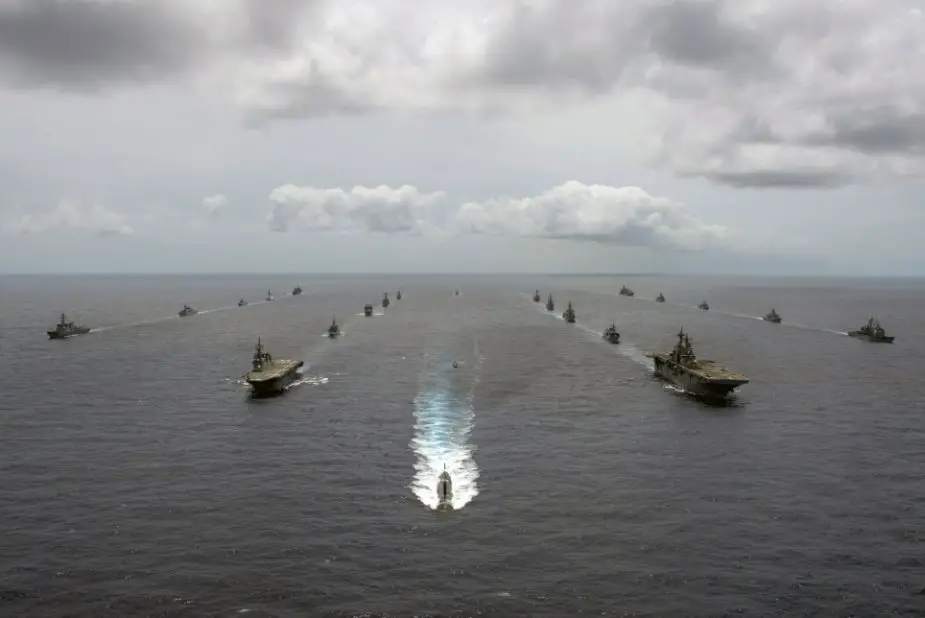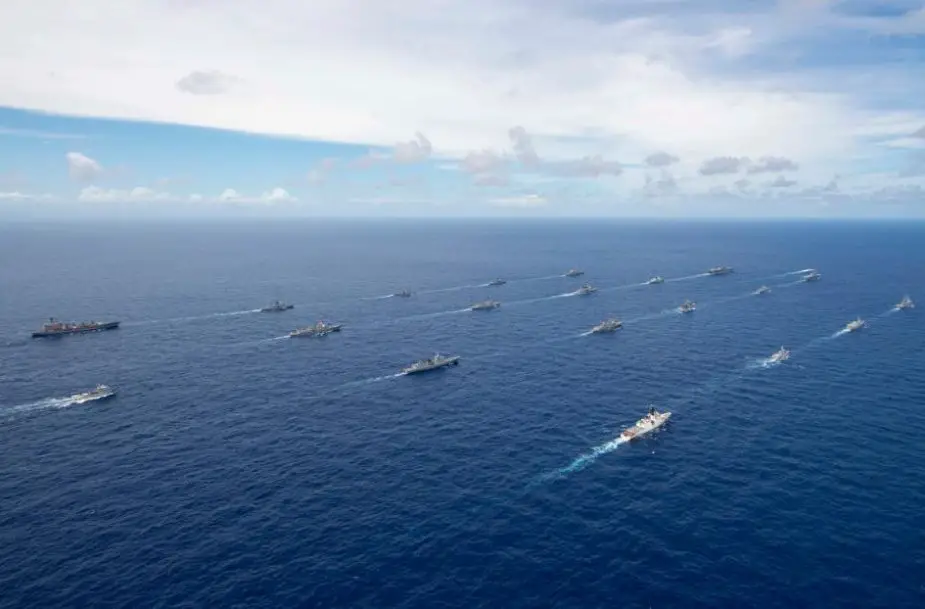Breaking news
Multinational naval & maritime exercise Rim of the Pacific 2020 concludes.
The international maritime exercise Rim of the Pacific (RIMPAC) 2020 concluded August 31 2020, following two weeks of at-sea-only training events conducted around the Hawaiian Islands.
Follow Navy Recognition on Google News at this link
 Multinational ships and a submarine steam in formation during a group sail as part of RIMPAC, Aug. 21. (Picture source: U.S. Navy/MC1 Rawad Madanat)
Multinational ships and a submarine steam in formation during a group sail as part of RIMPAC, Aug. 21. (Picture source: U.S. Navy/MC1 Rawad Madanat)
This year’s event included 53 replenishment-at-sea events, 101 pallets of cargo distributed, over 16,000 rounds of small arms munitions shot, over 1,000 large caliber weapons fired, 13 missiles expended, and 1,100 pounds of mail delivered.
Hosted by U.S. Pacific Fleet, RIMPAC 2020 was led by U.S. Vice Adm. Scott Conn, commander of the U.S. 3rd Fleet.
This year’s exercise includes forces from Australia, Brunei, Canada, France, Japan, New Zealand, Republic of the Philippines, Republic of Korea, Singapore, and the United States.
The at-sea-only construct for RIMPAC 2020 was developed to ensure the safety of all military forces participating, and Hawaii’s population, by minimizing shore-based contingents, while striking a balance between combating future adversaries and the COVID-19 threat. Commander, U.S. Pacific Fleet crafted the modified RIMPAC plan as a way to conduct a meaningful exercise with maximum training value and minimum risk to the force, allies and partners, and the people of Hawaii.
 Multinational ships and a submarine steam in formation during a group sail as part of RIMPAC, Aug. 21. (Picture source: U.S. Navy/MC1 Rawad Madanat)
Multinational ships and a submarine steam in formation during a group sail as part of RIMPAC, Aug. 21. (Picture source: U.S. Navy/MC1 Rawad Madanat)
This RIMPAC marks the first time a non-U.S. military woman, Capt. Phillipa Hay of the Royal Australian Navy (RAN), led a RIMPAC task force of more than 2,500 Sailors.
The biennial exercise contributes to the increased lethality, resiliency, and agility needed by the Joint and Combined Force to deter and defeat aggression by major powers across all domains and levels of conflict. The exercise provides a unique training opportunity that strengthens international maritime partnerships, enhances interoperability, and improves the readiness of participating forces for a wide range of potential operations. The relevant, realistic training program included multinational anti-submarine warfare, maritime intercept operations, and live-fire training events, among other cooperative training opportunities.


























